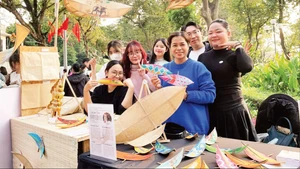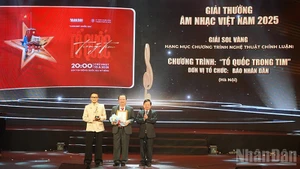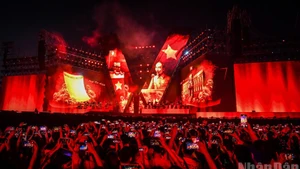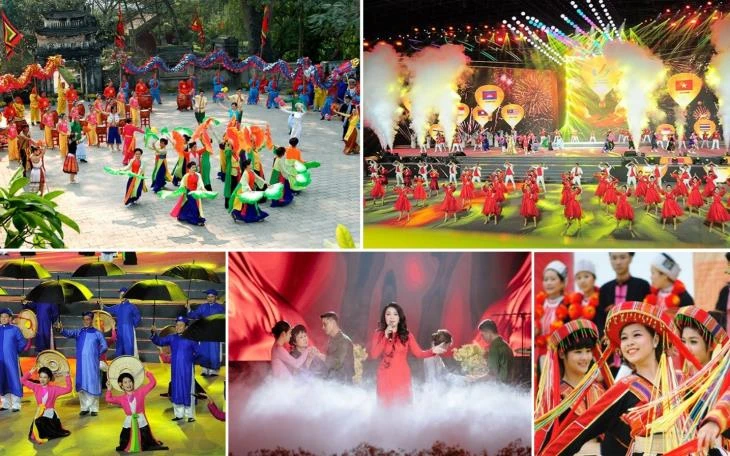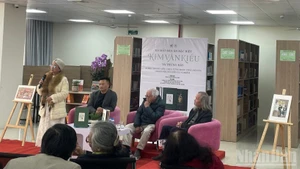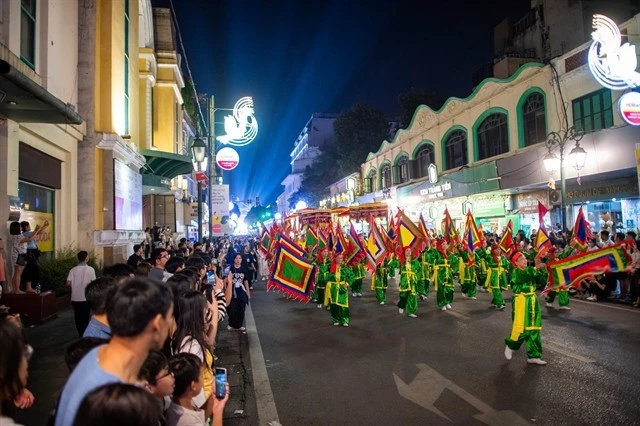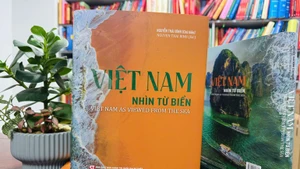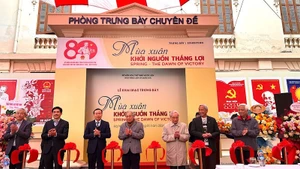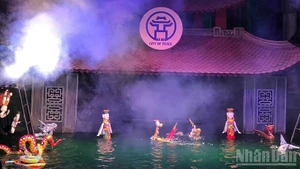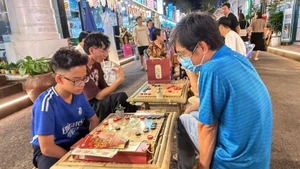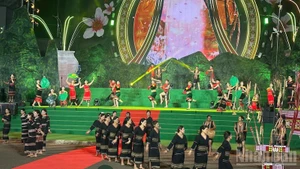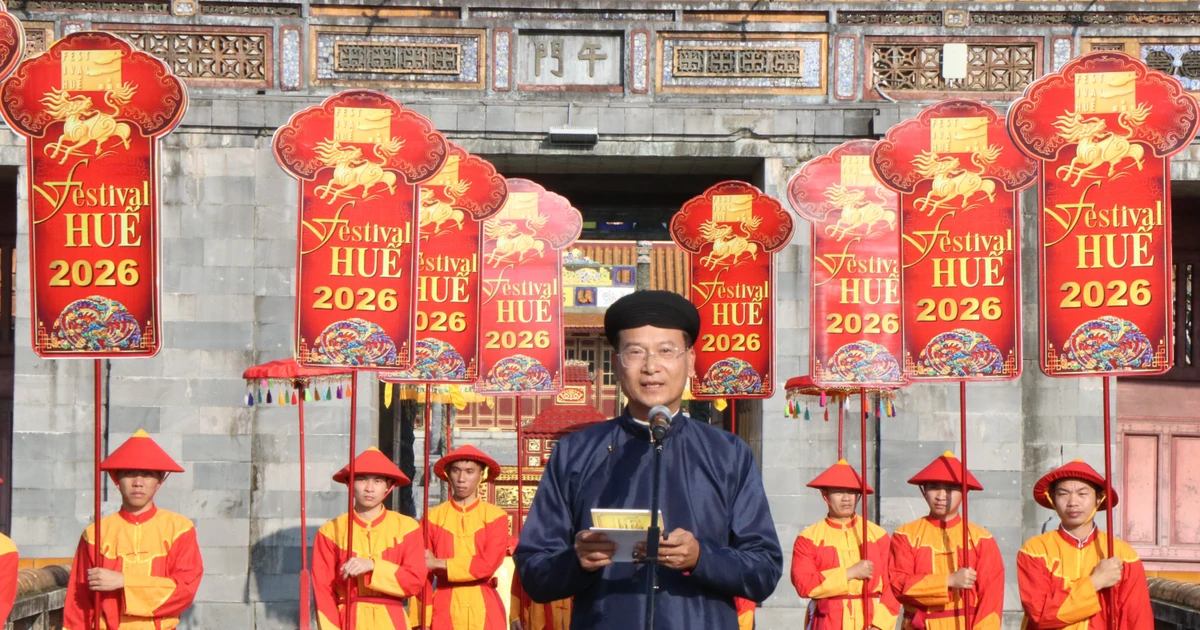UNESCO's consensus opens a new phase in promoting the value of Thang Long Imperial Citadel, with the highlight being the demolition of some construction items to move towards the restoration of the Kinh Thien Palace space.
There are few heritage sites whose hidden values are even greater than the known values like Thang Long Imperial Citadel. Therefore, the task of researching, preserving and promoting the value of this world cultural heritage site is extremely special.
Journey to affirm values
On the occasion of the 1000th anniversary of Thang Long-Hanoi, in 2010, Thang Long Imperial Citadel was recognised by UNESCO as a World Cultural Heritage. Many scientists liken Hoang Dieu Street to the back of a history book, and on both sides, the Thang Long Imperial Citadel Area and the archaeological site at No. 18 Hoang Dieu Street are golden pages of history in artefacts.
However, those pages of history still hide many secrets underground. At that time, the Citadel area had only discovered traces of Tran and Le dynasty architecture through a few small archaeological excavations.
The President of the Vietnam Archaeological Association, Associate Professor Tong Trung Tin once shared that there are few heritages as unique as Thang Long Imperial Citadel, where the unknown values are greater than the known values.
For this reason, right after becoming a World Cultural Heritage, Hanoi City coordinated with the Vietnam Academy of Social Sciences to promote research. By the end of 2013, scientists had excavated about 10,000 m2. The excavation locations were calculated very carefully because although the area was very large, it was still like "a drop in the ocean" compared to the total area of tens of hectares of the heritage.
On the occasion of the 1000th anniversary of Thang Long-Hanoi, in 2010, Thang Long Imperial Citadel was recognised by UNESCO as a World Cultural Heritage. Many scientists liken Hoang Dieu Street to the back of a history book, and on both sides, the Thang Long Imperial Citadel Area and the archaeological site at No. 18 Hoang Dieu Street are golden pages of history in artefacts.
Those excavations are a journey to affirm the value.
Associate Professor Tong Trung Tin has been in charge of the archaeological site of Thang Long Imperial Citadel for the past ten years. He said: "The journey of researching Kinh Thien Palace is a journey from nothing to something. From only having the foundation of Kinh Thien Palace, then Long Thien Palace (replacing Kinh Thien Palace under the Nguyen Dynasty), up to now, we have completed 60-70% of the process of restoring Kinh Thien Palace. Each time we excavate the archaeological site of Thang Long Imperial Citadel, we clarify the value."
In parallel with the research on the value of the objects, the activities and rituals of the ancient royal court were carried out.
Professor Nguyen Quang Ngoc compared the rituals to the soul of Thang Long Imperial Citadel and this is an element that must be researched, explored, and restored.
The difficulty in recreating ancient royal rituals in Thang Long Imperial Citadel is the paucity of documents.
But with the efforts of scientists, many rituals have been restored: Ong Cong, Ong Tao (Land Genie and Kitchen Gods) ritual, the ceremony to set up a Cay Neu (New Year's tree), Mid-Autumn Festival, and Doan Duong Festival. Every year, these rituals attract a large number of domestic and foreign tourists.
Evaluating the research and restoration of the rituals, the Head of the UNESCO Office in Vietnam Johnathan Baker said: "Here, the heritage agency has researched to create a connection between tangible heritage and intangible cultural heritage of Vietnam. I feel the close connection between heritage and the restoration of traditional rituals as living heritage in the contemporary period".
Along with that, the Thang Long-Hanoi Heritage Conservation Center also organises heritage education classes to help the younger generation better understand and connect with heritage. Every year, in addition to hundreds of thousands of domestic and international visitors, tens of thousands of students participate in experiential activities, thereby nurturing their love of heritage.
New phase in research and development
From the practice of research, conservation and promotion of the value of Thang Long Imperial Citadel, Vietnam has proposed several solutions for the next phase. A delegation from UNESCO and ICOMOS visited Hanoi and the heritage in July 2023 to assess the feasibility of these proposals.
At the 46th session of the World Heritage Committee held at the end of July, Chairperson of the World Heritage Committee Vishal V. Sharma approved Decision No. 46 COM 7B.43, approving Vietnam's proposals for the conservation and development of Thang Long Imperial Citadel.
The most important issues that UNESCO approved are: Archaeological research, the dismantling of structures that do not contribute to the outstanding universal value of the heritage, and are encroaching on the Central Axis, the restoration of Dien Kinh Thien.
During the French colonial period, the colonialists demolished the Palace and built an artillery headquarters there. The building was then called the Dragon House as its front and back had statues of stone dragons.
Presently, the remaining vestige of the ancient palace in the Imperial Citadel of Thang Long is its base.
The 2023 archaeological excavation is a breakthrough in research when in the Kinh Thien Palace foundation area, scientists found cultural strata spanning thousands of years, the earliest being the Dai La period, through the Ly, Tran, Le So (Early Le), Le Trung Hung to Nguyen dynasties.
The two French architectures were later used by the Ministry of National Defense, leaving their mark in the anti-American resistance war, to have a deeper understanding and honour the outstanding universal values of the heritage, especially the restoration of Kinh Thien Palace, we must have appropriate solutions, in which UNESCO approves "controlled dismantling".
Many scientists affirm that since being listed, the commitments of the Vietnamese Government to UNESCO have been implemented very seriously by Vietnam and Hanoi.
Dr Nguyen Viet Chuc, former Vice Chairman of the National Assembly's Committee for Culture, Education, Youth, Adolescents, and Children, who is closely associated with Hanoi's culture and once worked as Director of the Hanoi Department of Culture and Information, shared:
"UNESCO's approval of Vietnam's proposals to preserve and promote the value of Thang Long Imperial Citadel shows that Vietnam's proposals have a scientific basis and are extremely correct, both protecting core values and promoting heritage values.
Many experts and I agree that this is a model of heritage conservation that other heritages in the world can refer to. It must be affirmed that the Operations Department and Artillery Commands is a revolutionary heritage, associated with the period of resistance against the US. However, works such as the building are located in positions that hinder the promotion of the core values of the heritage, including the restoration of the Kinh Thien Palace.
Associate Professor Bui Hoai Son, Permanent Member of the Cultural and Educational Committee of the National Assembly, we are forced to face a difficult choice to restore Kinh Thien Palace and Dan Tri yard. The dismantling of the Operations Department and Artillery Commands to make room for the restoration of Kinh Thien Palace and Dan Tri yard will certainly cause much controversy.
However, the restoration of Kinh Thien Palace and Dan Tri yard is also a way to complete and preserve the heritage in the most comprehensive and complete way. Thus, heritage is not only old physical structures, but also a choice of cultural and historical values to pass on to future generations.
"Hopefully, through this choice, we will be able to fully preserve the historical and cultural values of Thang Long Imperial Citadel", he added.

